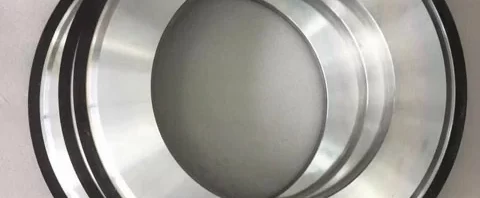The research of electroplated CBN grinding wheel for superalloy
Superalloys are a class of high-performance alloys known for their excellent mechanical strength, corrosion resistance, and thermal stability at high temperatures. They are widely used in industries such as aerospace, automotive, and energy due to their exceptional properties. However, the machining of superalloys presents significant challenges due to their high hardness and abrasiveness. Traditional abrasive wheels often struggle to achieve efficient material removal and precision in shaping superalloy components. Therefore, the development of advanced grinding tools, such as electroplated cubic boron nitride (CBN) grinding wheels, has attracted significant attention in the field of superalloy machining.
https://www.youtube.com/watch?v=3bv4ZFzd1jY
The need for advanced grinding tools
The machining of superalloys demands high precision and surface finish quality, as components often operate under extreme conditions. Conventional abrasive wheels, including diamond and aluminum oxide grinding wheels, encounter limitations when dealing with the hardness and abrasiveness of superalloys. Electroplated CBN grinding wheels have emerged as a promising solution due to the exceptional hardness and thermal conductivity of CBN abrasives. The electroplating process allows for precise control over the abrasive grain distribution, resulting in a tool that can withstand the demands of superalloy machining.
Advantages of electroplated CBN grinding wheels
Electroplated CBN grinding wheels offer several advantages over traditional abrasive tools. The high thermal conductivity of CBN abrasives helps dissipate heat during grinding, reducing the risk of thermal damage to the workpiece. This is particularly critical when machining superalloys, as any thermal alteration to the material properties can compromise component integrity. Furthermore, the electroplating process enables the design of intricate wheel profiles with precise abrasive grain positioning, allowing for complex and precise grinding operations on superalloy components.
Challenges and research focus
Despite the potential advantages of electroplated CBN grinding wheels, several challenges exist in optimizing their performance for superalloy machining. One prominent challenge is achieving consistent and long-lasting abrasive protrusion, as excessive wear can lead to reduced grinding efficiency and deteriorating surface finish. Researchers are focusing on developing novel bonding techniques and optimizing the electroplating parameters to enhance the adhesion between the CBN grains and the wheel substrate. Additionally, the selection of suitable electrolytes and process conditions during electroplating plays a crucial role in determining the structural integrity and overall performance of the grinding wheel.
Enhancing abrasive grain retention
To maximize the effectiveness of electroplated CBN grinding wheels, efforts are being made to enhance the retention of abrasive grains on the wheel surface. Advanced bonding materials and methods, such as nickel-based matrices and innovative bonding agents, are being explored to improve the cohesion between the CBN grains and the wheel structure. By enhancing the bond strength, researchers aim to minimize abrasive grain pull-out and achieve prolonged wheel life, ensuring consistent performance during superalloy machining operations.
Optimizing wheel structure and composition
Another area of research focuses on the optimization of the wheel’s structure and composition to meet the specific requirements of superalloy grinding. Tailoring the concentration and distribution of CBN abrasive grains within the electroplated layer can significantly impact the wheel’s cutting ability and heat dissipation properties. Furthermore, the incorporation of additives and reinforcement materials into the wheel matrix is explored to enhance its structural integrity and wear resistance, ultimately prolonging the operational lifespan of the grinding tool.
In conclusion, the research and development of electroplated CBN grinding wheels for superalloy machining represent a crucial endeavor in advancing manufacturing capabilities for high-performance materials. By addressing the challenges associated with abrasive grain retention, wheel structure optimization, and bonding enhancement, researchers aim to unlock the full potential of electroplated CBN grinding wheels in meeting the intricate demands of superalloy component production. Through continuous innovation and interdisciplinary collaboration, the future holds great promise for further enhancing the performance and versatility of electroplated CBN grinding wheels in the realm of superalloy machining.
.webp)

